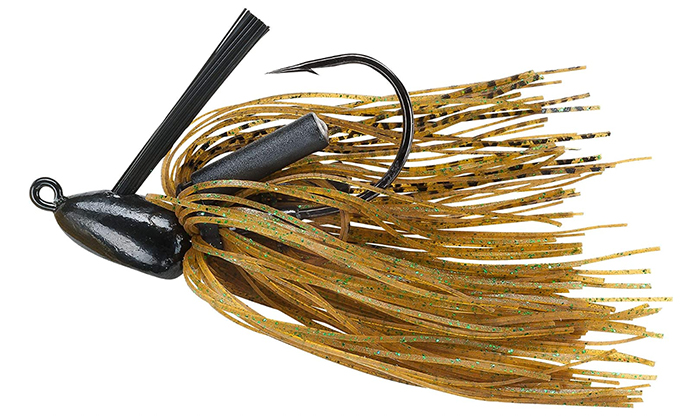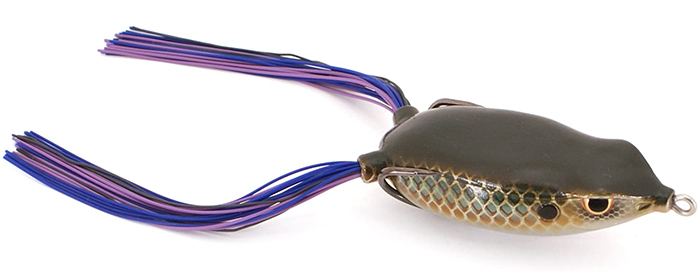Kayak fishing is a popular and exciting way to catch fish while enjoying the great outdoors. However, to be successful, you need the right equipment, and lures are an essential part of any angler’s toolkit. In this article, we’ll cover three lures you need when kayak fishing.
Jigs

Jigs are versatile and effective lures that can be used in a variety of situations. They come in various shapes, sizes, and colors, making them ideal for catching different species of fish. They are also relatively easy to use, making them perfect for beginners. When kayak fishing, jigs can be used to catch fish in shallow and deep water. You can cast them out and reel them back in slowly, or you can bounce them off the bottom to imitate a baitfish or shrimp. Jigs are also effective when fishing around structure, such as rocks, docks, or submerged trees. Additionally, jigs can be used with a variety of fishing techniques, including vertical jigging, pitch and flip, and swim jigging. This makes them a great choice for kayak anglers who want to try different fishing methods and experiment with different retrieves.
Jigs are also highly customizable, as you can adjust the weight, hook size, and trailer to suit your fishing needs. This allows you to target specific species of fish and adapt to changing conditions on the water.
Another advantage of jigs is that they can be used year-round, making them a versatile lure for all seasons. Whether you’re fishing in the heat of summer or the depths of winter, jigs can be effective in catching fish.
Topwater lures

Topwater lures are a favorite among many kayak anglers, and for good reason. They are exciting to use and can result in explosive strikes from fish. Topwater lures come in various styles, such as poppers, frogs, and buzzbaits, to name a few. When kayak fishing, topwater lures are effective in shallow water or around structure, such as weeds or lily pads. You can cast them out and create a commotion on the water’s surface to attract fish. They are especially effective during the early morning or late evening when fish are feeding near the surface. Topwater lures can be used to target a wide range of species, including bass, pike, and musky. When using a topwater frog or mouse lure, you can imitate a fleeing prey, causing fish to strike out of instinct. Poppers and chuggers can mimic baitfish breaking the surface, attracting predatory fish to investigate.
One of the benefits of using topwater lures when kayak fishing is that they can provide a visual spectacle for the angler. The thrill of seeing a fish strike a lure on the surface of the water is an experience like no other. It can also provide valuable insight into the type and size of fish in the area, helping you adjust your fishing strategy for the rest of the day. It’s important to note that topwater lures require a bit of finesse to use effectively. It’s crucial to have a steady retrieve and not to overwork the lure. Too much action can spook fish, causing them to shy away. Also, it’s important to be patient and let the fish fully take the lure before setting the hook.
Soft plastics

Soft plastics are another versatile and effective lure that every kayak angler should have in their tackle box. They come in various shapes, sizes, and colors, making them ideal for catching different species of fish. Soft plastics can be used in many ways, such as on a jighead, a Texas rig, or a Carolina rig. When kayak fishing, soft plastics can be used to catch fish in shallow and deep water, and they are especially effective when fishing for bass, crappie, or walleye. You can cast them out and reel them back in slowly or twitch them to imitate a wounded baitfish.
One of the key advantages of using soft plastics when kayak fishing is their durability. Unlike other lures that may break or wear out quickly, soft plastics can withstand multiple casts and catches. This makes them an excellent choice for kayak anglers who want to save money and reduce waste by using lures that last longer. Soft plastics are also highly customizable, as you can adjust the weight and hook size to suit your fishing needs. This allows you to target specific species of fish and adapt to changing conditions on the water. Additionally, you can add scent or flavor to soft plastics to make them more attractive to fish, such as adding garlic or crawfish scent to a crawfish-shaped soft plastic.
Another advantage of soft plastics is that they can be used in a variety of fishing techniques, such as flipping, pitching, and drop-shotting. This makes them a versatile lure for kayak anglers who want to try different fishing methods and experiment with different retrieves.
Overall, soft plastics are a must-have lure for kayak anglers looking to catch a variety of fish species and save money on their tackle. With their versatility, durability, and effectiveness, soft plastics are an essential component of any kayak angler’s tackle box.
In conclusion, when kayak fishing, you need to have the right lures to be successful. Jigs, topwater lures, and soft plastics are three lures that every kayak angler should have in their tackle box. With these lures, you can catch a variety of fish in different situations and have an enjoyable and productive day on the water.
FAQs
Q: What is the best colour for a fishing kayak?
The colour of your fishing kayak can make a difference in your fishing success, but it ultimately depends on the water and the fish you are targeting. In clear water, natural colours like olive green, beige, or blue can blend in better and reduce the chance of spooking fish. In murky water, brighter colours like yellow or orange can help you stand out and attract fish. However, keep in mind that other factors like noise and movement can also impact your fishing success.
Q: What is the best lure for river fishing?
The best lure for river fishing can depend on the species of fish you are targeting and the type of water you are fishing in. In general, lures that mimic the natural prey of the fish, such as crankbaits or soft plastics, can be effective. Spinnerbaits, jigs, and topwater lures can also work well in certain situations. Experiment with different lures and techniques to see what works best for you.
Q: Do fish prefer bait or lures?
Fish can be caught with both bait and lures, and whether they prefer one over the other can depend on the species, location, and other factors. Some fish, such as catfish or carp, may prefer bait like worms or corn, while others, like bass or trout, may prefer lures that mimic baitfish or insects. It’s always a good idea to research the species of fish you are targeting and experiment with different baits and lures to see what works best.